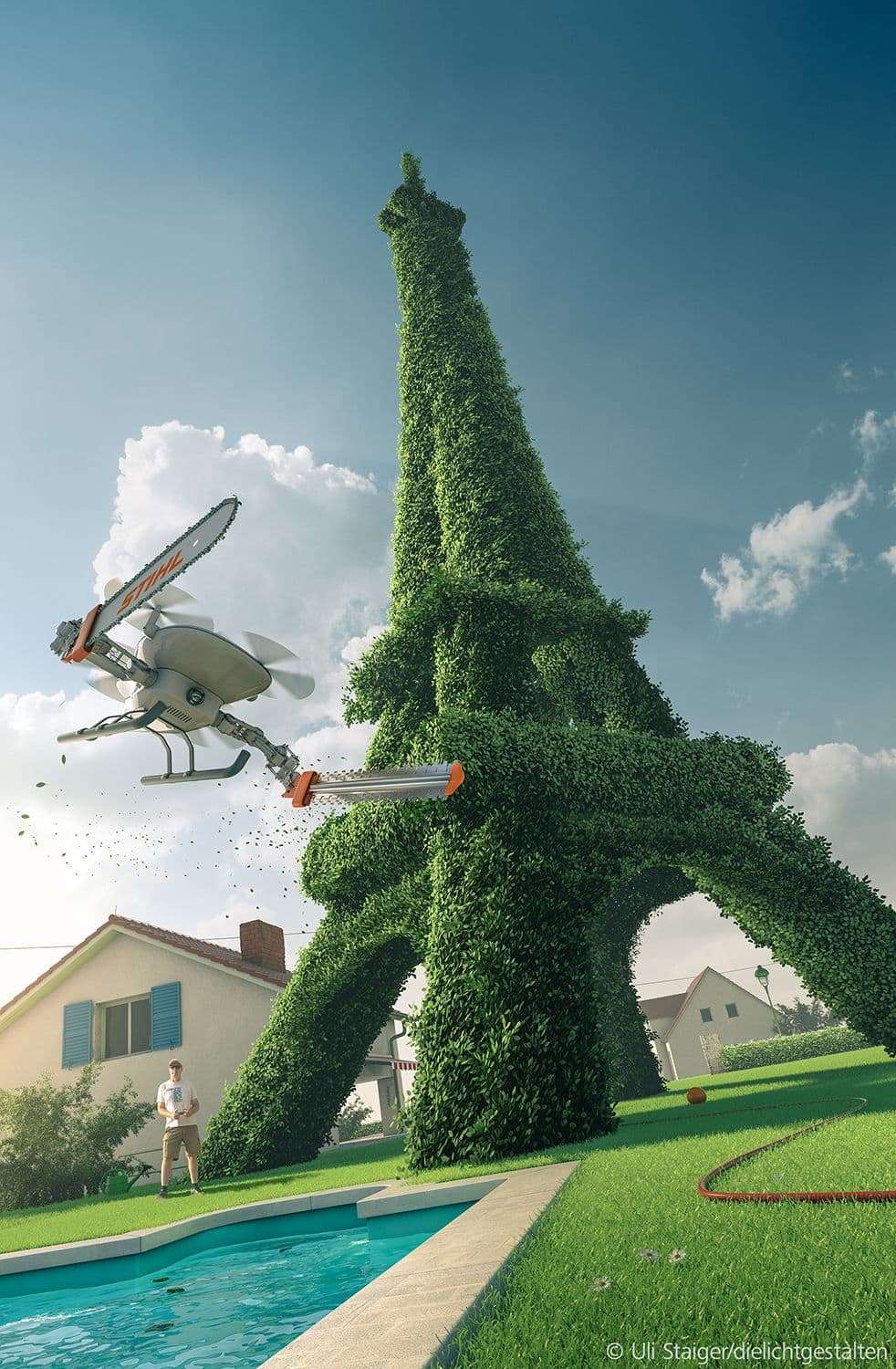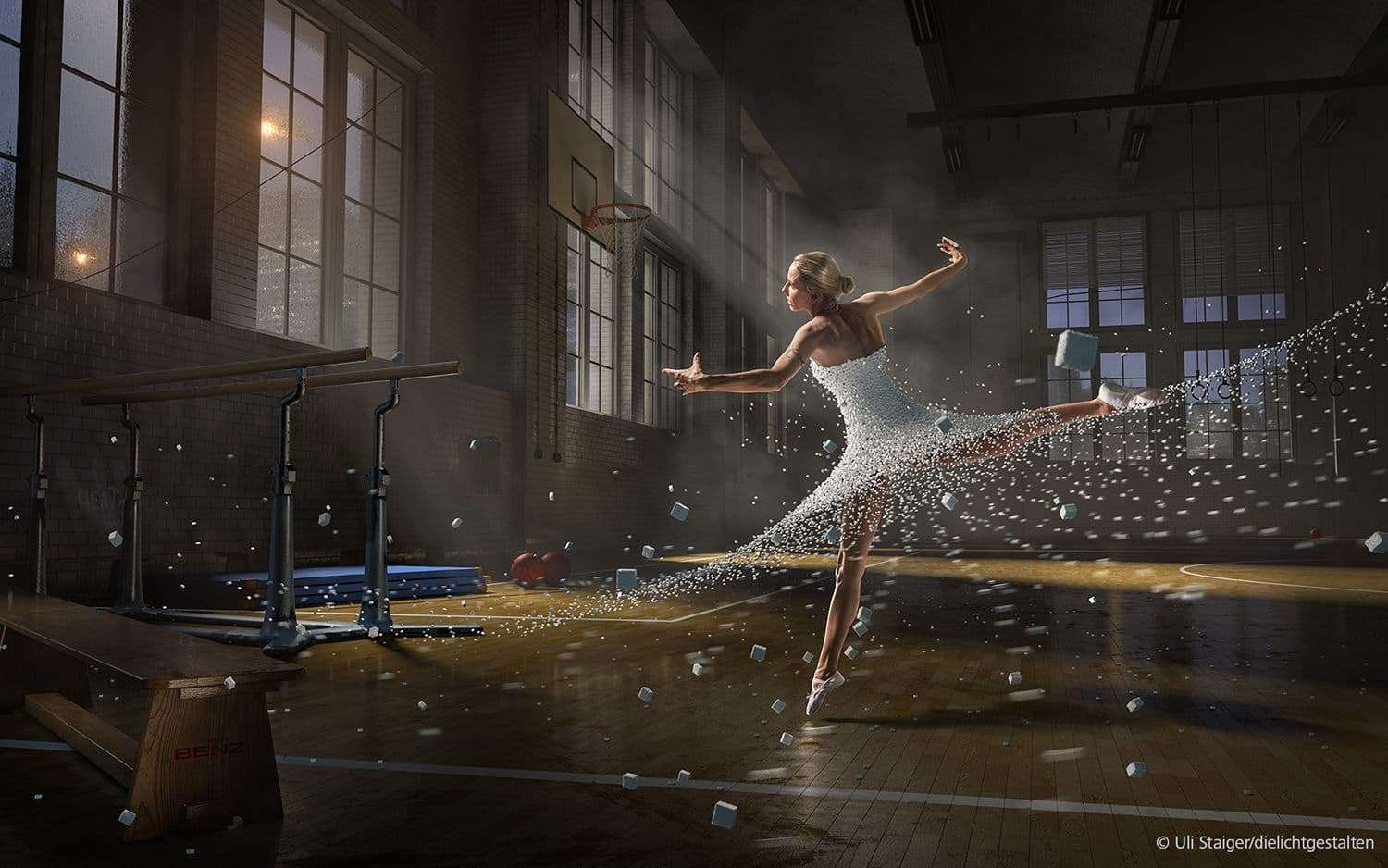
Combining Photography and 3D Art
When I look at the drawings I did as a child, they already have a lot in common with the work I do today, which is really crazy. Second, I'm inspired by reality, which is spectacular enough.

When I look at the drawings I did as a child, they already have a lot in common with the work I do today, which is really crazy. Second, I'm inspired by reality, which is spectacular enough.
Photographer and CG Artist Uli Staiger talks about his work and shares advice on how photography can help improve your skills as a Digital Artist.
Uli Staiger is a photographer, CG artist, book author and trainer for digital image composing and 3D design. In 2014 he received the "Photographer of the year award" from the Federation of European Photographers. We talked to him about his way of combining 3D graphics with photography and about what CG artists can learn from taking pictures.
I come from professional photography, i.e., I trained as a traditional photographer and was still doing analogue photography at the time. After all, there was no digital photography in the 80s and this new technology only came up slowly in the early 90s. At some point I started working with Photoshop and discovered the incredible possibilities it offers to bring my fantasies to the screen.
At a certain point, however, I couldn't get any further with photography, Photoshop and painting techniques alone. So I started to use Cinema 4D to model and render 3D content and add it to my work. Today I create whole worlds of images with CGI, photography, Photoshop and Photoshop painting techniques.
I would advise anyone involved in (visual) digital art to explore their relationship to a camera, to take photographs and to explore how you can create a visual world using a camera.
Originally I wanted to become a veterinarian but I soon realized that you need a good high school diploma/university entrance qualification to do so. So I thought about how I could bridge the time I would need to wait to get into university and started an apprenticeship as a photographer. I thought to myself: "Give it a try, being a photographer is cool and goes down well with the girls". Then I realized pretty quickly that photography can be a pretty big thing for me and I stuck with it.
In order to develop myself, I spent 18 months in the USA, assisted a photographer there and travelled the world, gaining a lot of life and work experience. After completing the master school in Photography in 1998 I started my own business in Berlin. You are known for combining photography with 3D graphics.
I have a lot of imagination and wanted to depict things like vehicles, airplanes, rockets and spaceships and mount them in a profane environment to create an exciting picture out of the resulting tension. Of course, in the real world you often can’t simply photograph these motifs. But if you model them in 3D, you have incredible possibilities to show the craziest things. For example, a thirty-meter high hedge in the shape of the Eiffel Tower in a garden.

Since 1987 you have been professionally involved in photography and have witnessed paradigm shifts such as the development of Photoshop and the advent of 3D software.
I would advise anyone involved in (visual) digital art to explore their relationship to a camera, to take photographs and to explore how you can create a visual world using a camera. I believe that it is only through the weighting of the different techniques (photography, image processing, possibly also CGI and painting techniques) that an artist's own style emerges.
In photography, certain parameters such as perspective or light cannot be changed after the shutter release has been pressed. Furthermore, already when choosing the right place and time for a photo, one has to "work systematically towards the finished picture". This ability to "work systematically" towards the finished picture is certainly also helpful for CG artists.
There are plenty! For example, when I worked for almost a year with an amazing
photographer in New Jersey, I learned a lot about lighting from him. As a CG artist, if you know how the different light sources work and have bought a studio lighting kit from Greyscalegorilla, it's nice to have a technical command of it but you also have to be able to use it creatively. I think the creative work with light is best learned in photography, because there you learn how "real" light works.
Your own style will develop if you do a lot of work.
There are probably two main sources from which I draw my inspiration: Firstly, even as a little kid I was incredibly interested and inspired by science fiction series and films. When I look at the drawings I did as a child, they already have a lot in common with the work I do today, which is really crazy.
Second, I'm inspired by reality, which is spectacular enough. Often it is helpful to imagine that something from reality is not there for a short time. For example, if you look at the blue sky on a beautiful day and see a white cloud, you can just imagine that you've never seen a cloud before. Only when you look at reality with this view do you realize how fascinating it is. The ideas for my pictures often arise from the interaction of this way of looking at things and my fascination for large vehicles.

First of all, perspective and light have to match, otherwise the two images will never unite. But these are only the aspects that are obvious to everyone. In addition, the level of detail must fit together. A photograph usually lives from many small details. To model all of them would keep the CG artist busy for a week. If you put a modeled 3D object with comparatively few details into a photograph with many details, it looks artificial and out of place. So the 3D model must have a comparable level of detail and it must not look like it’s "freshly rendered".
Making it look a little "used" is probably the step that takes the most time in my process. Since I always aim for a photo-realistic look, I create this used look of the 3D models directly in Cinema 4D, for example using vertex maps and BodyPaint 3D. The result is much more realistic than if you would try to achieve the used-look of the models in Photoshop afterwards. In Photoshop, I only repaint single details like specular highlights, but 95% of the look has to come from Cinema 4D.
Long before Corona, I had the idea of having a shark smash through a kitchen table. But I found it too silly to let the shark pull waves behind it as if the table were a surface of water. So I decided to let the table shatter with the Voronoi Fracture object. Later on I had the idea to let the shark also push a tablecloth in front of it.
Although the picture shows something unrealistic, the tablecloth moved by the shark creates enough realism to make the viewer think at first that the shark was actually there. Actually, I wanted to use an unshaven guy in an undershirt as a model for the photo. But because of Corona, all the models cancelled, so I had to model myself. This inspired me to place the "cerveza" bottles in the picture, which remind me of Corona beer.

There are two things I would recommend to everyone. One: You have to model like a madman. Start in the morning, stop in the morning and try not to sleep in-between modelling – this has to be your life for a while. There is no way to learn it only through tutorials, you just have to do it.
Second: I would recommend to copy things as well, I did that myself. When I started taking photographs, I deliberately copied the great masters of photography and marked the copies as such to improve my skills.
Try to emulate your role models and then at some point part with them and overtake them. Your own style will develop if you do a lot of work. I can also recommend to send your own work to competitions, share it in communities and get feedback that way.
